Have you ever stepped outside on a crisp winter morning, only to feel the air so cold it takes your breath away? That’s a common experience in Montana, where the temperatures can plunge to bone-chilling lows. But why is Montana so cold?
We’ll dive into the heart of Montana’s frosty climate, exploring the sensory tapestry of a landscape blanketed in snow, where the silence is as profound as the cold. As someone who has felt the sting of Montana’s winter air against my cheeks, I’ll share my insights to bring the experience closer to home.
- Related article: Montana’s Winter Weather
We’ll cover the history, temperature data, weather hazards, and even the top activities that you can do during this season and reveal the unexpected beauty that comes with the territory.
Key Takeaways on Montana’s Cold Temperature
- Montana experiences some of the most extreme winter conditions, ranging from a record low of -70°F (-56.67°C) near Helena to historically significant temperature fluctuations.
- Remarkably cold spells in Montana can last from October to April, with December holding the peak chill.
- Montana’s winters are characterized by fluctuating temperatures, ranging from frigid to almost cozy, adding an extra layer of unpredictability.
- Essential preparation is key for anyone facing a Montana winter, from investing in insulated gear to staying informed about daily forecasts.
- Montana’s winter landscape is a snow-lover’s dream, with the highest snowfall recorded in Silver Gate reaching an impressive 853 inches in one season.
- Montana offers a range of winter pursuits, from dog sledding and ice climbing to more contemplative activities like ice fishing and sleigh rides.
- Montana’s winter comes with its fair share of hazards, including blizzards, freezing rain, and extreme cold. Being well-prepared and minimizing risks is essential for a safe and enjoyable experience.
Montana’s Chilling Temperatures: Severity of Cold Weather
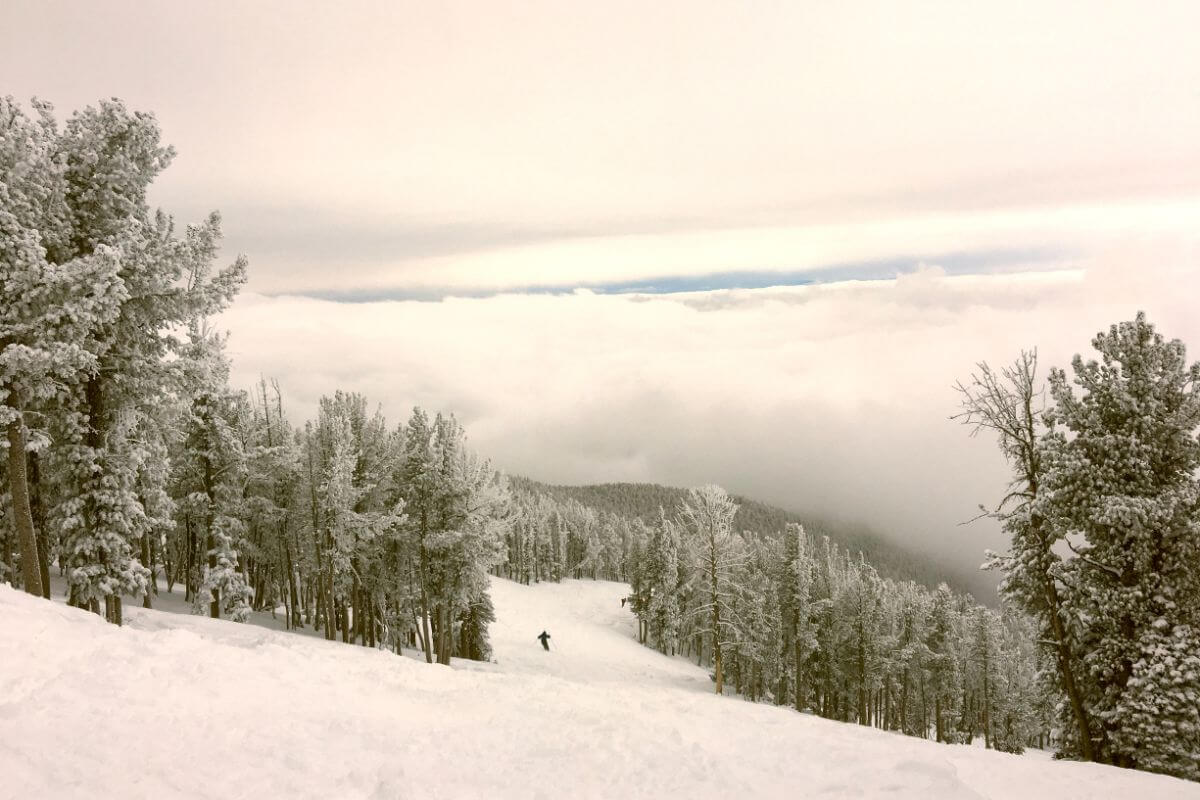
I’ve experienced some bone-chilling temperatures in my time, but none quite like the frigid winters in Montana. The state holds the national record for the coldest temperature, a jaw-dropping -70°F (-56.67°C) near Helena at Rogers Pass.
But that’s not the only place feeling the freeze – most Montana towns see recorded lows ranging from -10°F (-23.33°C) to -50°F (-45.56°C) or even colder. And it’s not just a brief cold snap – subzero temperatures can stick around from mid-November to the end of March.
The daily temperatures in Montana can swing wildly, contributing to the state’s ranking as the 6th coldest in the country, with an average temperature of 42.6°F (5.89°C).
Montana’s winters are no joke, with subzero lows and unpredictable temperature fluctuations that can leave even the hardiest of travelers reaching for an extra layer.
So if you’re planning a visit during the winter months, be sure to pack plenty of warm gear and prepare for some seriously chilly days and nights.
Montana’s Most Frigid Winters
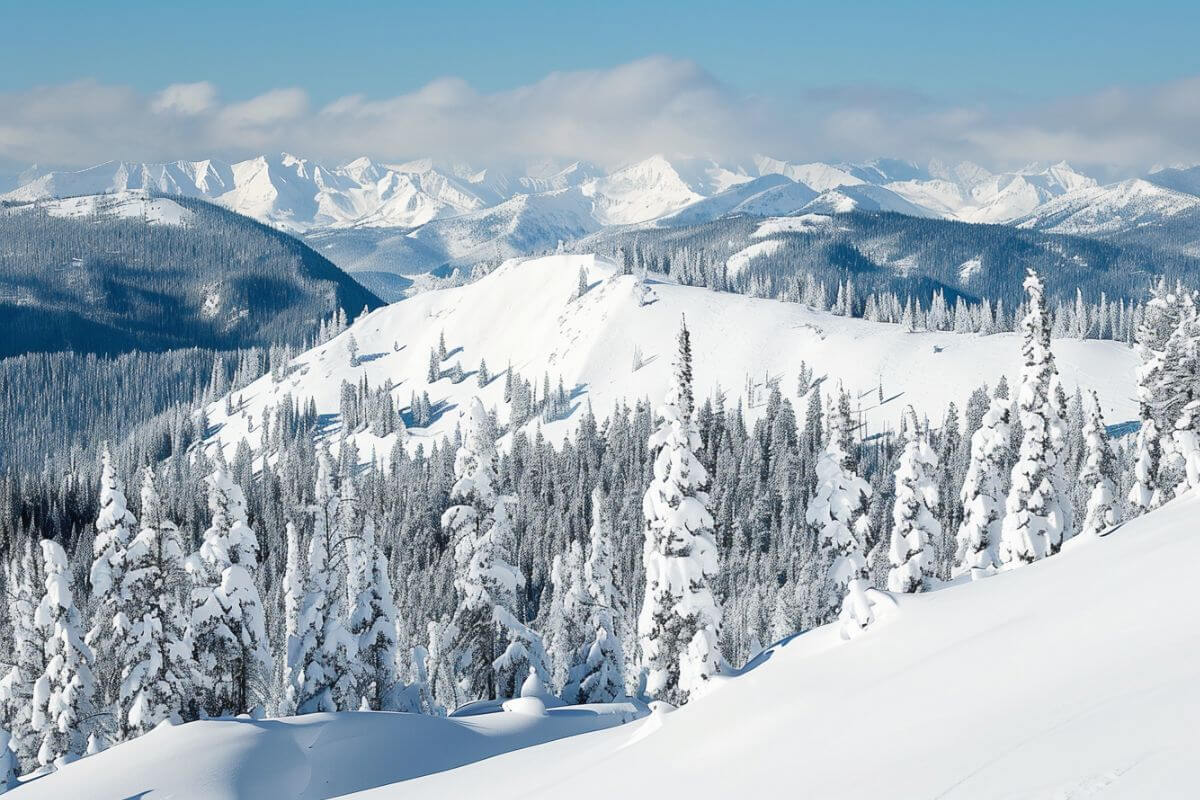
I have experienced some of the harshest winter months in the United States in Montana. Winter there usually spans from October to April, with December being the peak. The average low temperatures during December plummet to 2°F (-16.7°C) in Glasgow and 22°F (-5.6°C) in Flathead Lake.
Some of the most frigid winters in Montana include February 1989, with an average temperature of 22.4°F(-5.78°C) and lows of -53°F (-47.22°C) at Summit, -57°F (-49.44°C) at Cascade, and -59°F (-50.56°C) at Glasgow. In 1989, temperatures dipped to -33°F (-36.11°C) in Helena, with wind chills making it feel more like -75°F (-59.44°C).
In 1965, a record low of -66°F (-54.44°C) was set near West Yellowstone, this is the all-time lowest recorded temperature for any residential community in the contiguous United States.
Montana’s winters pose challenges such as subzero temperatures, extreme temperature swings, and significant snowfalls. Despite the harsh conditions, Montana is renowned for offering excellent winter activities and stunning landscape views, making it a sought-after destination for tourists.
However, it’s crucial to be well-prepared for the cold, with proper clothing and thorough research of weather conditions before venturing out.
Snow in Montana
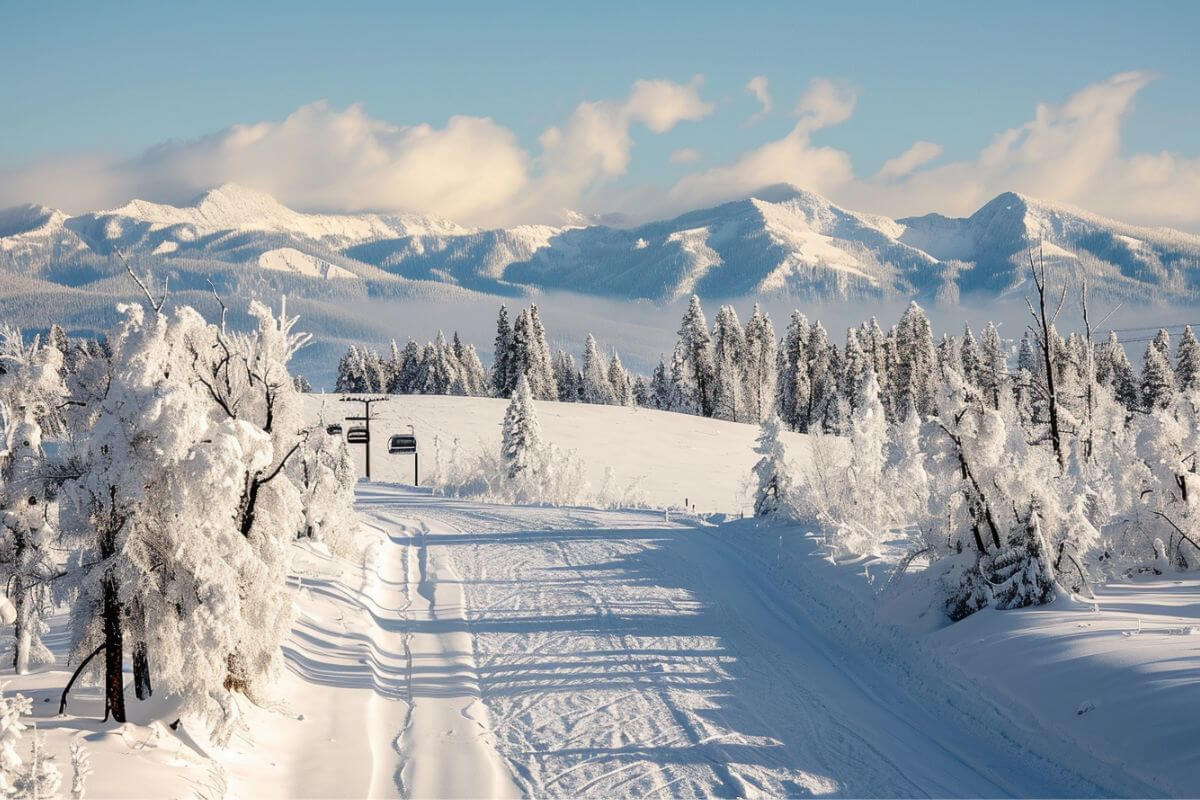
I could hardly believe it when I first heard about the incredible variation in average winter snowfall across Montana. I’m talking about everything from a mere 147 inches (373 cm) to a whopping 600 inches (1,524 cm) in some locations! Take Silver Gate, for example.
This little town typically gets around 600 inches (1,524 cm) of snow per year. But in the 2022-2023 winter season, they saw a staggering 853 inches (2,166 cm) thanks to a strong La Niña winter pattern.
The state’s tallest mountains regularly record over 100 inches (254 cm) of 3-month snowpack, and in some parts of Montana, snow can occur at any time of the year.
If you find yourself in eastern cities like Glendive, Havre City, Great Falls, or Miles City during the winter, you might have to deal with up to 3 inches (8 cm) of 30-day snowpack.
The story is different in the western regions where more wind hinders snow formation, resulting in lower figures. Yellowstone National Park takes the cake for the highest snowpack average, followed by Mystic Lake, West Glacier, Seeley Lake, and Red Lodge regions.
And let’s not forget the ever-important fact of being prepared for cold temperatures and heavy snowfall when in Montana during winter. No matter the actual snowfall amount, it’s always critical to be ready.
It’s good to know that snow typically starts falling in October in most regions, coinciding with the elk spotting season and the last of fall’s vibrant colors.
As the winter progresses, the intensity of snowfall peaks and then gradually slows down towards April, with mountain regions sometimes even experiencing summer snow instead of rain due to frigid weather.
Coldest Recorded Temperature in Montana’s History
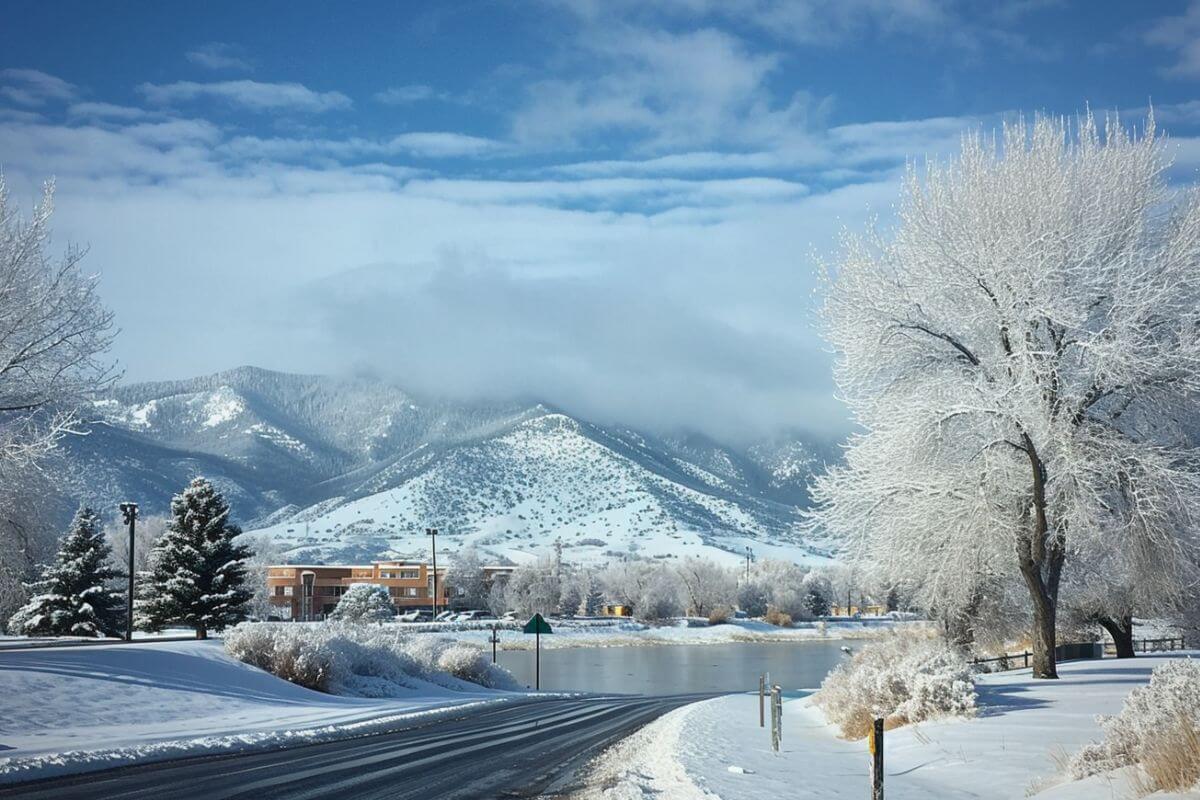
The temperature plunge in Fairfield, Montana, on December 14, 1924, stands out as a remarkable event in terms of extreme cold.
Imagine going from a balmy 63°F (17.22°C) to a bone-chilling -21°F (-29.44°C) in just 12 hours. That’s an 84-degree change in half a day, the greatest ever recorded in the United States. But that’s not the only record-breaking temperature in Montana’s history.
On January 20, 1954, Rogers Pass hit a staggering -70°F (-56.67°C), setting a national record for the lower 48 states. It’s mind-boggling to think about how nature can be so extreme.
And it’s not just about the cold snaps. Montana has also seen its fair share of snowstorms, with the worst one hitting in 1969.
High-speed winds and snowdrifts up to 20 feet (6 meters) tall left Southeastern parts of the state buried, impacting the temperature in unimaginable ways.
Comprehending the significant impact of nature on climate can be challenging. Montana’s weather history demonstrates the raw power of the natural world, serving as a reminder of our smallness in its face.
Top Activities You Can Do During Winter in Montana
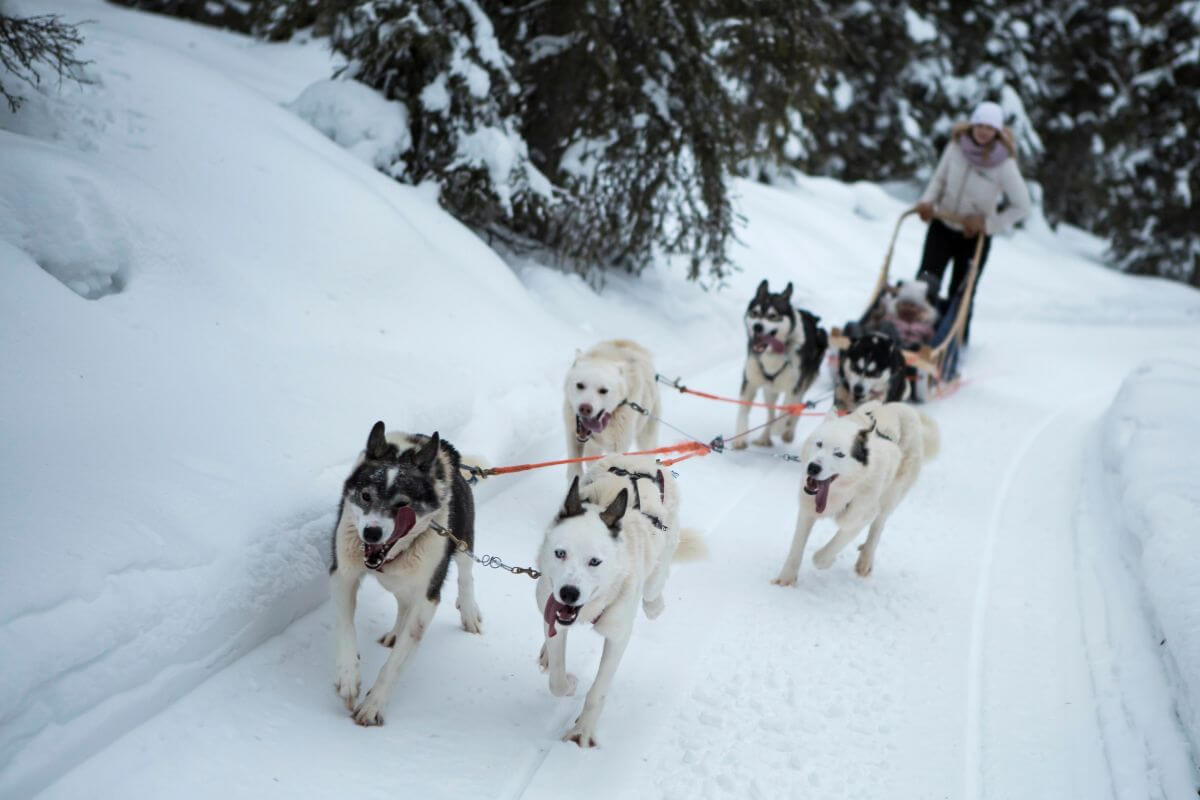
When it comes to experiencing winter in Montana, there’s no shortage of unique activities to take part in. Here are some top activities you can do during winter in Montana:
- Dog Sledding – Experience the thrill of dog sledding through Montana’s snowy landscapes, a unique and exciting adventure.
- Winter Fat Biking – Explore the winter wonderland on a fat bike, which allows you to ride on snow and enjoy the serene beauty.
- Backcountry Hut Stay – Shack up in a backcountry hut for a night or more, experiencing the solitude and beauty of Montana’s wilderness.
- Snowshoeing – Stay active and enjoy the outdoors by snowshoeing through Montana’s national parks and other areas.
- Ice Climbing – Challenge yourself with ice climbs on Montana’s frozen waterfalls and cliffs.
- Skijoring – Watch or participate in skijoring, a unique sport that combines Montana’s cowboy culture with skiing and pulling dogs or horses through obstacles.
- Ice Fishing – Enjoy a day of ice fishing on Montana’s many lakes and ponds, a serene activity that allows you to immerse yourself in the winter scenery.
- Sleigh Rides – Experience the magic of winter by taking a horse-drawn sleigh ride through Montana’s snowy landscapes.
Montana’s winter season is a tapestry of possibilities, offering something for everyone. Whether you’re a thrill-seeker or just looking to enjoy the simple pleasures of winter, Montana offers a diverse range of activities to make the most of the season.
Why not embrace the winter wonderland and try out some simple winter sports, or explore the backcountry for a unique winter adventure in Montana?
Weather Hazards in Montana During Winter
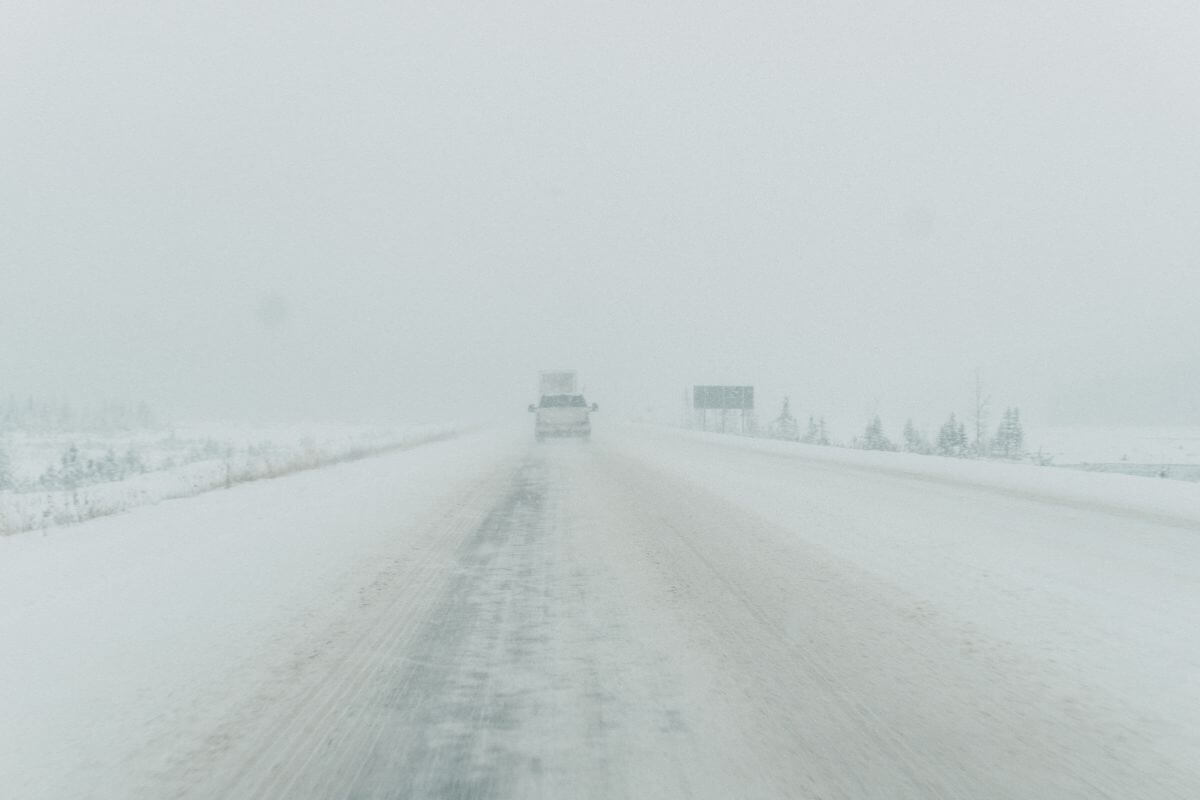
Despite the availability of a lot of winter activities and sights to see, winter in Montana also presents several weather hazards. Some of the common weather hazards include:
- Blizzards – Snow and strong winds combined can produce blinding snow, near-zero visibility, deep drifts, and extreme wind chills.
- Freezing Rain – Rain that freezes when it hits the ground can create icy conditions on roads, walkways, trees, and power lines.
- Ice Storms – Heavy freezing rain can lead to the formation of ice on roads, walkways, and other critical infrastructure, making them dangerous to navigate.
- Wind Chill Advisories or Warnings – A combination of wind and cold can result in temperatures that feel colder than the actual air temperature, which can be life-threatening if exposed for extended periods.
- Avalanches – Montana’s mountainous terrain is prone to avalanches, which can be triggered by heavy snowfall or other weather-related factors.
- Extreme Cold – Montana experiences some of the coldest temperatures in the United States, with subzero temperatures and significant temperature fluctuations.
The combination of snow and strong winds can lead to near-zero visibility and extreme wind chills, while heavy freezing rain can result in dangerous ice formation on critical infrastructure.
Wind chill advisories and avalanches are also common, posing life-threatening risks to those exposed for extended periods. Montana’s extreme cold temperatures, with significant fluctuations, further add to the challenges of outdoor activities.
To minimize risks associated with these weather hazards, it is crucial to be well-prepared with appropriate clothing and have emergency supplies on hand.
Checking weather conditions before venturing out is essential for safety and well-being. It is imperative to prioritize safety and take necessary precautions to enjoy outdoor activities without putting oneself at risk.
Why Is Montana So Cold Final Thoughts
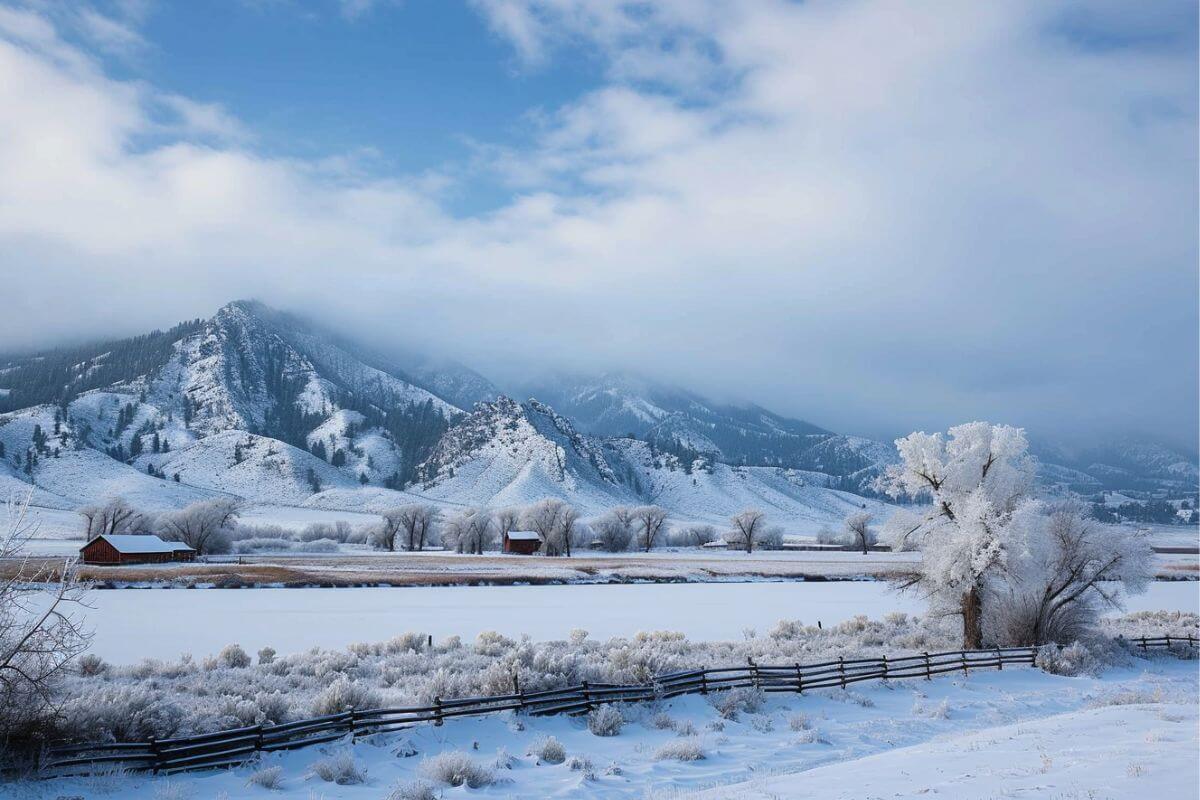
Montana’s winter is known for its challenging and serious conditions. With record lows reaching -70°F (-56.67°C) near Helena, the extreme cold is no exaggeration.
But for winter enthusiasts and those seeking a challenge, the subzero temperatures, temperature fluctuations, and heavy snowfall make Montana the ultimate playground. However, this winter wonderland also comes with its fair share of challenges, from blizzards to avalanches.
But amidst the frigid temperatures and potential hazards, there lies a unique beauty. The snowy haven of Montana offers activities like dog sledding and ice climbing, providing adventure and tranquility in equal measure.
Preparation is key before any winter adventure in Montana – proper clothing, emergency supplies, and thorough weather research are non-negotiable. However, with the landscape transformed into a snowy wonderland, the rewards are more than worth it.
Montana’s winter offers a remarkable blend of challenges and rewards, catering to individuals captivated by extreme cold or those lured by various winter activities. So come prepared, embrace the chill, and witness the unrivaled beauty of Montana’s winter.
Why Is Montana So Cold FAQs
1. Does It Ever Get Warm in Montana?
Yes, Montana experiences warmer temperatures, particularly during the summer months.
Summer in Montana (June-August) typically brings milder to warm weather, with temperatures ranging from comfortable lows to pleasantly warm highs, providing a contrast to the colder winter conditions the state is known for.
2. Is Montana a Cold Place to Live?
Montana is generally considered a cold place to live, especially during the winter months. The state experiences harsh winter conditions with subzero temperatures, significant snowfall, and extreme temperature fluctuations.
Residents need to be prepared for the cold, making proper clothing and thorough weather awareness essential for those living in Montana.
3. What Is the Coldest State in the U.S.?
Alaska holds the title of the coldest state in the United States. Its vast northern expanses and Arctic climate contribute to extremely low temperatures, with some areas experiencing frigid conditions throughout the year.
The state’s lowest recorded temperature is -80°F (-62.2°C), making it the coldest state in the U.S.
4. Are Montana Winters Harsh?
Yes, Montana winters are known for their harsh conditions. The state experiences extremely cold temperatures, with subzero lows, significant temperature fluctuations, and heavy snowfall, making winter challenging for residents and visitors alike.
Proper preparation, including appropriate clothing and awareness of weather conditions, is crucial for navigating the harsh winter months in Montana.
Enjoyed this article? Find more Montana insights in our article library:

